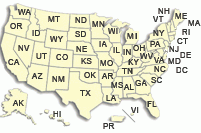Virginia Water Science Center
|
Project Information Title: Number: Location: Cooperating Agencies: Project Chief: Period of Project: USGS IN YOUR STATEUSGS Water Science Centers are located in each state.  |
Fairfax County Monitoring NetworkProblem Statement In the past decade, hundreds of millions of dollars have been invested into the implementation of Best Management Practices (BMPs), with the explicit goal of improving water quality. Earlier research has demonstrated that these implemented BMPs are effective at the plot-scale and the field-scale; however, less information is available to document the effectiveness of these BMPs at the watershed scale - precisely the scale at which water-quality compliance and water-quality improvements are typically judged. Because of the costs associated with the implementation of these BMPs, federal, state, and local agencies are asking:
Answers are needed to these questions to support the development of watershed implementation plans, to motivate BMP implementation by stakeholders, and to ensure the vitality of the cost-share programs that have supplemented the cost of implementing these BMPs. Objectives: Develop and initiate a water-resources monitoring network within Fairfax County to describe surface-water quantity and quality in numerous County streams. The data collection will be designed to provide a long-term record that can be used to address two fundamental objectives:
Approach The approach for satisfying the first objective includes operating an intensive water-resources monitoring station in each of four selected watersheds. Each water-resources monitoring station includes a continuous-record (continuous record = data collected every 15 minutes) stream gage, continuous-record water-quality monitor (measuring water temperature, pH, specific conductance, and turbidity), and an automatic stream-water sampler for the collection of stormflow samples. Water-quality sampling (for nutrients and suspended sediment) is conducted monthly for the determination of trends, and during stormflow events for the calculation of loads. Additionally, benthic macroinvertebrate sampling is conducted annually to evaluate the effect of BMP implementation on the in-stream biological community. Additional data are collected in ten less-intensively monitored basins - referred to as partial-record trend basins to evaluate the transferability of the results from the intensive water-resources monitoring stations (Objective 2),. These partial-record trend basins will be used to determine whether (and how) the inferences drawn in the intensively monitored basins are applicable to other basins. To cost-effectively generate the required data for water-quality trend evaluation in these watersheds, a partial-record streamgage is operated and monthly water-quality sampling is conducted, thus allowing the determination of trends in sediment and nutrients. Annual benthic macroinvertebrate sampling is conducted at these sites as well.
Relevance and Benefits: In the past decade, hundreds of millions of dollars have been invested into the implementation of Best Management Practices (BMPs), with the explicit goal of improving water quality. However, insufficient information is available to document the effectiveness of these BMPs at the watershed scale. Detailed, data-rich water-quality monitoring is required to quantify improvements in water quality that are related to implementation activities. Once water-quality improvements are documented in watersheds with extensive water-quality monitoring, there is a need to transfer the lessons learned to other watersheds with considerably less water-quality monitoring. The proposed Fairfax County Water Resources Network will be instrumental in improving our understanding of BMP efficacy and the transferability of this knowledge to other watersheds. The proposed study will also serve to improve our overall understanding of hydrological processes in small urban watersheds. The data collected as part of this study will be utilized by multiple parties for planning and operational purposes. For example, the sediment and nutrient contributions from urban watersheds to the Chesapeake Bay is of critical concern for the Chesapeake Bay Program managers and these data will be widely used by the Bay Program to improve their understanding of urban basins
Appropriate graphics |